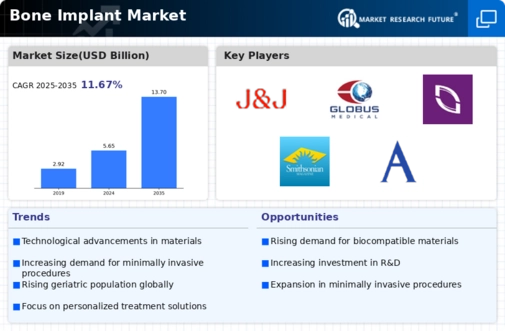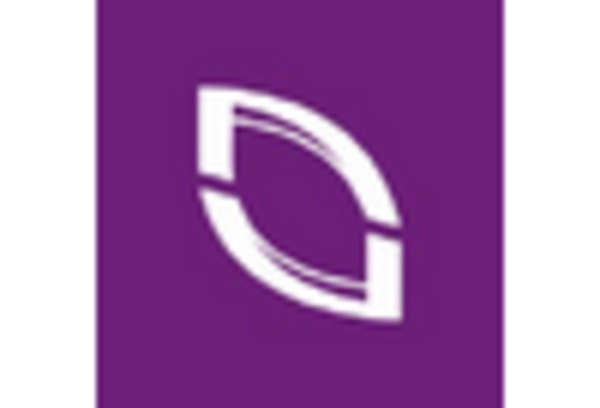Market Analysis
In-depth Analysis of Bone Implant Market Industry Landscape
The bone implant Market resides in a dynamic milieu of several factors that influence its growth and development. Basically, the market is driven by the increasing prevalence of musculoskeletal disorders and the aging population globally. The demand for advanced and innovative bone implant solutions has been buoyed by increased conditions related to bones like osteoporosis and fractures.
Also, technological advancements have been critical in shaping these market dynamics. Continuous research and development has seen the introduction of state-of-the-art materials and design techniques, thus improving the effectiveness and lifespan of bone implants. For example, titanium and its alloys have become popular due to their bio-compatibility as well as strength hence boosting the expansion rate of this market.
Similarly, global economic trends together with healthcare policies significantly affect the bone implant market. A number of opportunities have opened up following increasing expenditure on health care services as well as better medical infrastructure in emerging economies. This further fueled market growth since patients are more aware about benefits associated with bone implant procedures.
In addition to that, key industry players’ collaborations and strategic partnerships continue shaping up competitive landscape within this sector of bone implant market. These alliances seek pooling resources, sharing expertise in order to expedite development commercialization processes for innovative bone implants’ products among others. In effect therefore; technological advancements fostering this trend have also led to some consolidation of various market segments where bigger organizations acquire smaller firms strategically towards bolstering their portfolios.
The regulatory frameworks coupled with standards also critically impact on such dynamics within markets. Compliance to provided guidelines ensures safety along with efficacy regarding such implants thereby instilling confidence both among doctors and patients generally speaking. Regulatory environment is changeable because product developments changes entry strategies marketing approaches etc.
Moreover, patient’s preferences play a significant role in determining how the industry evolves over time (Jiao et.al 2016). This has necessitated innovative approaches for instance; minimally invasive techniques whereby personal customisations underpin bone-implant market. These developments enable the manufacturers to come up with implants not only addressing medical needs but also meeting the anatomical variations and lifestyle preferences of individuals.
Equally, geographical factors affect these dynamics. Differences in healthcare infrastructure; reimbursement policies as well as prevalence rates for musculoskeletal disorders across different regions dictate market growth trends. Amidst global health systems’ transformations, there are discussions on value-based care which is about improving patient outcomes at lower costs thereby influencing adoption of bone implant technologies.
Hence, it can be seen that the market dynamics of bone implant Market are very complex interplay between medical technological economic regulatory and socio-cultural factors. Consequently, even as worldwide population continues aging and musculoskeletal disorders continue being public health issue; the bone implant market is poised to experience uninterrupted growth. It is therefore imperative for industry participants to understand this dynamism so as to capitalize on available opportunities while tackling challenges within this critical healthcare sector."

















Leave a Comment